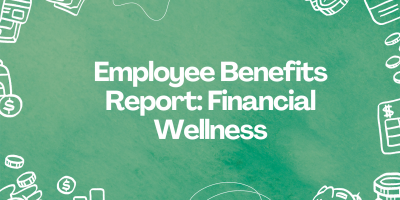
BNPL & Financial Literacy: What is Buy Now, Pay Later?
Is it a reinvention of the installment plan, a new form of consumer credit, a revival of layaway programs, or an e-commerce marketing tool?

Two-thirds of Americans can’t tell how much they spent the previous month, reveals financial software company Intuit.
And according to the American Psychological Association, the same percentage reported money as a significant stress source. Whether it’s poor spending or bad management, the lack of financial knowledge can strain people’s bank accounts and mental health.
In fact, the average cost of financial illiteracy was $1,819 in 2022, almost $500 higher than the 2021 figure.
Regardless of their income, many people struggle with budgeting.Thus, it would be prudent for employers tomake financial coaching a fundamental aspect of financial literacy and wellbeing programs.
A financial coach can be costly, so paying for one out of pocket might affect people’s wallets even more. On the other hand, getting it as part of a benefits package can help them manage expenses while at the same time boosting work performance and retention.
In celebration of National Financial Literacy Month, this Shortlister article explores the importance of a financial coach, particularly as an asset to organizations and their employees.

According to Prudential’s 2018 financial wellness report, saving for retirement was a priority for 75% of Americans, including younger generations. Affording future health care costs (73%) and keeping up with current expenses (72%) were next in line. However, the report also revealed that a third of the respondents had an inaccurate perception of their finances, which is more than one in four Americans.
Shockingly, 17% consider themselves in good financial standing even though their actual financial situation is not good. On the other end of the spectrum, 12% of people feel pessimistic about their financial health, even though their objective financial health is relatively high.
Unfortunately, financial illiteracy and sound money management skills often prevent people from achieving their goals.
One study reveals that spending (35%), knowledge (33%), and savings (29%) were the critical areas of financial weakness.
Financial coaching is one way of addressing and overcoming these issues.
It’s the process of working with a coach or a mentor to improve an individual’s economic wellbeing. If you’re wondering how to become a financial coach, the process involves working with individuals to improve their economic well-being through personalized guidance. Since it’s a tailored approach that considers a specific situation, its goal falls anywhere between helping people gain control of their finances, reducing debt, or achieving a long-term plan.
What sets this practice apart from other financial wellness programs is that it focuses on the behavioral and emotional aspects of money management. In other words, it could help employees recognize and unlearn lousy spending habits to create better ones.

A financial coach helps clients develop strategies that align with their goals and values. The process usually consists of four stages:
More specifically, financial coaching plays a critical role in assisting individuals and businesses in increasing knowledge and achieving financial success by helping them:
Since it’s a sensitive and highly individualistic matter, coaches typically work with clients continuously to monitor their progress and adjust their strategies.
In addition to this, a financial coach offers emotional support and encouragement by helping clients overcome stress, anxiety, and fear.
Removing these emotional barriers, in return, leaves space for the individual to work on the behavioral aspects and take control of the situation. This holistic approach to financial wellness sets a coach apart from advisors, planners, consultants, and other education programs.
Although both fall on the broad spectrum of financial literacy, the role of a financial coach vs. a financial advisor differs.
Unlike advisors who focus on managing investments and providing specific investment advice, financial coaches center on the client’s overall economic wellbeing, including budgeting, debt reduction, and developing a savings plan.
In other words, they help clients identify and overcome financial obstacles and establish healthy spending habits that can lead to long-term financial success.
Thus, before seeking out an advisor, many people should consider coaching.
Since they’re usually not certified, these coaches can’t help clients with their taxes or tell them where to invest their money. Instead, they educate, motivate, and guide people in creating a step-by-step plan for achieving a financial goal.
Overall, they are the first defense against economic burdens and an affordable asset in fighting financial illiteracy.
The price of financial illiteracy is high and rising.
John Hancock’s survey from 2018 reveals that stressing about finances can cost companies approximately $2,000 per worker. Yet providing workplace financial education can cost as little as $100 per employee annually.
As a standalone service, financial coach costs depend on several factors:
Coaching rates range anywhere between a few hundred to thousands of dollars.
However, as part of a larger financial wellness benefits package, the total cost largely depends on the company size. Or, the bigger the company, the lower the expenses. Some coaching programs may charge an hourly rate or a percentage of the employee’s salary, while others charge a flat fee.
Although financial coaching can be more costly for smaller employers, it has many benefits, so it’s an investment worth considering.

Two in five respondents in John Hancock’s survey say their productivity would be higher if they didn’t have to spend time worrying about money at work. Three in five employees agree that getting monetary advice could reduce their stress.
The results also conclude with other research on financial priorities.
Namely, retirement was first on the employees’ priority list, followed by Social Security and Medicare claiming and debt counseling.
Seeing the potential of financial coaching as an employee benefit raises the question of what employers should do about it.
For starters, they can offer financial coaching packages to workers, especially those most affected by financial illiteracy.
FINRA’s 2018 survey discloses a racial gap in financial knowledge. Asian-American and Caucasian test-takers scored better than Hispanic and African Americans. Another report further exposes a gender gap since, globally, 35% of men are financially literate compared to 30% of women. Regarding age, the knowledge rates are lower for adults over 50.
Considering these discrepancies and the need to understand this topic better, it’s safe to assume that financial coaching as an employee benefit can help everyone.
Financial wellness programs and resources help employees cope with stress. At the same time, they can improve productivity and drive and retain top talent. Adding financial coaching can further benefit both sides.
From accountability and motivation to job loyalty, there are many advantages to this workplace initiative for employees and their organizations.
Between the rising cost of living, global uncertainty, and lack of financial knowledge, many factors contribute to money-related stress. Setting goals can be challenging enough, let alone building wealth. Therefore, people need support to cut through the spending clutter, budget better, and follow through with their plans.
A financial coach provides a range of benefits for employees, including:
As for employers, helping workers overcome financial stress is an opportunity for them to boost performance and increase retention.
According to a report by Bank of America, 80% of employers agree that offering financial wellness support can result in better job loyalty.
After all, employees who feel appreciated and acknowledged by their company are more likely to stay with it. The results also show improvement in the following:
Finally, investing in this employee benefit could reduce other employer expenditures, like stress-related healthcare expenses. It’s also an excellent way to reduce National Insurance costs since workers who are knowledgeable and make sound money decisions usually increase their pension contributions.



The Consumer Financial Protection Bureau (CFPB) defines economic wellbeing as:
Financial coaching reinforces this by providing the right tools, knowledge, and support. Therefore, a coach will work with a client to enhance key areas, including:
Empirical evidence supports the influence of coaching on a person’s financial wellbeing. A report from CFPB reveals that 57% of clients who enrolled in such a training program noticed an increase in their scores. Other evaluations by the Bureau indicate that a financial coach also significantly increases the client’s money management skills and helps with other metrics like savings, debt, credit score, and economic confidence.
So, is it worth it?
The goal of a coach is to empower clients to take control of their finances, make informed decisions, and achieve their money goals, whether that’s building an emergency fund, buying a home, starting a business, or retiring comfortably.
A successful execution will ultimately remove some of the stress people feel in their day-to-day lives. Thus, implementing it as a benefit in the workplace could increase worker retention, acquisition, and productivity.
Ultimately, any type of financial wellness initiative in the workplace, including financial coaching, is worth it for the organization’s and its employees’ wellbeing.

Increasing financial knowledge could be a game changer.
The national 2021 study by FINRA Foundation reveals that people who were more financially literate had greater economic capabilities. They were more likely to make ends meet, spends less of their income, and save for retirement.
Considering how beneficial financial coaching can be for the workforce, employers should make it an integral part of a comprehensive benefits package supporting their wellbeing and retention.
Disclosure: Some of the products featured in this blog post may come from our partners who compensate us. This might influence the selection of products we feature and their placement and presentation on the page. However, it does not impact our evaluations; our opinions are our own. The information provided in this post is for general informational purposes only and should not be considered as legal, tax, accounting, or investment advice. For advice on specific issues, please consult with a qualified professional.
Content Writer at Shortlister
Browse our curated list of vendors to find the best solution for your needs.
Subscribe to our newsletter for the latest trends, expert tips, and workplace insights!

Is it a reinvention of the installment plan, a new form of consumer credit, a revival of layaway programs, or an e-commerce marketing tool?

In an era where 60% of Americans live paycheck to paycheck, companies are increasingly recognizing the urgent need for comprehensive financial wellness programs.

As we anticipate whether the increase in 401(k) contribution limits will carry over into next year, explore how this change impacts employees, employers, and the economy.

Offering a 401(k) sends a clear message to your workers that you care – and are willing to invest in – their future. Explore our 401(k) Providers Buyers Guide to equip your organization with the knowledge for a successful selection and implementation process.
Used by most of the top employee benefits consultants in the US, Shortlister is where you can find, research and select HR and benefits vendors for your clients.
Shortlister helps you reach your ideal prospects. Claim your free account to control your message and receive employer, consultant and health plan leads.